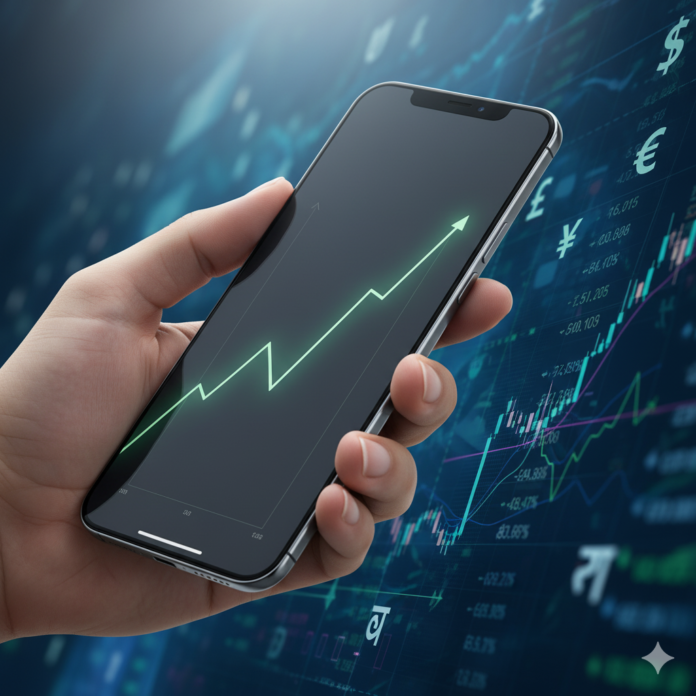Every time Apple launches a new iPhone, it sends ripples not just through the tech world but across global financial markets and business ecosystems. With the official unveiling of the iPhone 17, iPhone 17 Pro, iPhone 17 Pro Max, and the revolutionary iPhone Air at Apple’s September 9th event, we’re witnessing yet another confirmation that Apple isn’t just a tech company—it’s an economic powerhouse.
But here’s the million-dollar question: Is the iPhone 17 merely a smartphone, or is it a sophisticated investment vehicle disguised as consumer electronics? Today, we’ll decode why every new iPhone launch serves as a critical indicator of global economic trends and investment opportunities.
Apple’s Brand Empire: An Unstoppable Economic Force
The World’s Most Valuable Brand
In 2025, Apple once again claimed the crown as the world’s most valuable brand. According to Brand Finance, Apple’s brand value stands at a staggering $574.5 billion, significantly ahead of second-place Microsoft’s $461 billion valuation.
These aren’t just numbers—they represent Apple’s transformation into a lifestyle empire. People don’t buy iPhones solely for technology; they purchase them as status symbols and identity statements. This psychological positioning is what economists call “Veblen goods”—products whose demand increases with price.
The “Luxury + Utility” Formula
Apple has masterfully balanced two seemingly contradictory elements:
- Luxury Appeal: Premium design, advanced materials, exclusive features
- Daily Utility: Essential tools for everyday productivity and communication
This combination transforms the iPhone from a mere purchase into a long-term investment. An iPhone retains its value far better than competitors, making it economically rational even at premium pricing.
iPhone 17’s Innovation Strategy & Market Positioning
Revolutionary New Features
The iPhone 17 lineup introduces groundbreaking innovations that justify its premium positioning:
Technical Specifications:
- 6.3-inch ProMotion Display: Enhanced responsiveness and visual clarity
- A19 Bionic Chip: Unprecedented AI and machine learning capabilities
- Advanced Ceramic Shield: Latest-generation protection technology
- Center Stage Front Camera: Revolutionary video calling experience
- Five Distinct Colors: Personalization options for diverse preferences
Strategic Market Segmentation
Apple’s four-model strategy demonstrates sophisticated market understanding:
- iPhone 17 ($799): Core features for mainstream users
- iPhone Air ($899): Ultra-thin design for portability enthusiasts
- iPhone 17 Pro ($999): Advanced features for professionals
- iPhone 17 Pro Max ($1,199): Ultimate performance for power users
This segmentation strategy, known as “good-better-best” pricing, captures maximum market share across different economic segments while maintaining premium positioning.
Global Market Dynamics & Consumer Psychology
Developed vs. Emerging Market Trends
Developed Markets (USA, Europe, Japan):
- Technology-driven upgrades
- Corporate and professional requirements
- Ecosystem integration priorities (Mac, iPad, Apple Watch)
Emerging Markets (India, Southeast Asia, Latin America):
- Status symbol acquisition
- Social mobility signaling
- Long-term investment perspective
The Psychology of Premium Pricing
Apple’s pricing strategy leverages several psychological principles:
1. Price-Quality Heuristic: Higher price = perceived higher quality
2. Anchoring Effect: Pro Max pricing makes standard models seem “affordable”
3. Social Proof: Widespread adoption validates purchase decisions
4. Loss Aversion: Fear of missing out on ecosystem benefits
Production Challenges & Supply Chain Resilience
Global Supply Chain Complexity
iPhone 17 production represents one of the world’s most sophisticated manufacturing operations:
Critical Components:
- A19 Chips: TSMC’s 3nm technology (Taiwan)
- OLED Displays: Samsung and LG partnership (South Korea)
- Camera Modules: Sony sensors (Japan)
- Memory: SK Hynix and Micron (Global)
Geopolitical Manufacturing Shifts
Apple’s strategic pivot from China to India represents a masterclass in supply chain diversification:
Benefits:
- Risk Mitigation: Reduced geopolitical exposure
- Cost Optimization: Lower labor and operational costs
- Market Access: Better positioning in world’s largest smartphone market
Challenges:
- Quality Assurance: Maintaining Apple’s stringent standards
- Skill Development: Training local workforce
- Infrastructure: Building supporting ecosystem
Smartphone Industry Evolution & Competitive Landscape
The Feature Convergence Challenge
Modern smartphones increasingly offer similar capabilities:
- Advanced camera systems
- Fast charging technology
- OLED displays
- 5G connectivity
So where’s Apple’s differentiation?
1. Ecosystem Integration The iPhone serves as the gateway to Apple’s $100+ billion services ecosystem:
- iCloud storage subscriptions
- App Store transactions
- Apple Music and TV+
- Apple Pay financial services
2. Software Optimization iOS provides advantages that specifications can’t capture:
- Longer software support (5-6 years vs. 2-3 for Android)
- Better privacy protection
- Seamless cross-device functionality
3. Brand Perception Apple has achieved what marketing experts call “category transcendence”—moving beyond product features to lifestyle aspiration.
Competitive Analysis
Samsung Galaxy S25 Ultra vs. iPhone 17 Pro Max:
- Samsung Advantages: More RAM, S Pen functionality, customization
- iPhone Advantages: Better optimization, longer support, higher resale value
Google Pixel 9 vs. iPhone 17:
- Google Advantages: AI photography, pure Android experience, competitive pricing
- iPhone Advantages: Build quality, brand prestige, ecosystem benefits
Investment Value: Consumer & Investor Perspectives
Consumer Investment Analysis
Resale Value Comparison (24-month depreciation):
- iPhone 14 Pro: 35% depreciation ($999 → $650)
- Samsung Galaxy S23 Ultra: 65% depreciation ($1,200 → $420)
- OnePlus 11: 70% depreciation ($699 → $210)
Total Cost of Ownership:
- iPhone 17 ($799) ÷ 5-year lifespan = $160/year
- Premium Android ($600) ÷ 3-year lifespan = $200/year
This analysis reveals that iPhones, despite higher upfront costs, often provide superior economic value over time.
Apple Stock Performance & iPhone Impact
Historical iPhone Launch Impact on AAPL:
- Pre-launch speculation drives 5-10% volatility
- Launch day reactions vary by feature innovation
- Post-launch sales data drives quarterly performance
Current Investment Metrics (August 2025):
- Stock Price: ~$224 (recovering from 15% H1 decline)
- Market Cap: $3.4 trillion
- P/E Ratio: 28.5 (premium but justified by growth)
The Ecosystem Multiplier Effect
Average Revenue Per User (ARPU) Analysis:
- iPhone-only users: $799 (device cost)
- Ecosystem users: $2,400+ (device + accessories + services)
Typical Ecosystem Expansion:
- AirPods ($150-$550): 73% of iPhone users purchase
- Apple Watch ($250-$800): 45% adoption rate
- iPad ($350-$1,500): 31% of iPhone users own
- MacBook ($1,000-$3,000): 22% professional users upgrade
This ecosystem strategy transforms one-time hardware buyers into recurring service subscribers, fundamentally changing Apple’s business model from transactional to relationship-based.
Regional Investment Opportunities
North American Market
Investment Focus: Premium segment dominance
Opportunity: Services revenue growth (43% gross margin vs. 36% for products)
Risk: Market saturation concerns
European Market
Investment Focus: Privacy-conscious consumers
Opportunity: Digital Markets Act compliance, creating new service opportunities
Risk: Regulatory pressure on App Store revenues
Asian Markets
Investment Focus: Manufacturing and consumption hub
Opportunity: Growing middle class in India, Southeast Asia
Risk: Local competition and price sensitivity
Emerging Markets Strategy
Apple’s approach to price-sensitive markets:
- Older Model Strategy: iPhone 13 and 14 remain available at lower price points
- Trade-in Programs: Making upgrades more affordable
- Financing Options: Partnership with local financial institutions
Future Investment Projections & Expert Analysis
2025-2030 Apple Stock Forecasts
Bull Case ($450+ by 2030):
- Services revenue reaches $120+ billion annually
- AR/VR products create new category
- India becomes second-largest market
Bear Case ($180-220 range):
- Smartphone market saturation
- Increased regulatory pressure
- Geopolitical supply chain disruptions
Base Case ($350-400 by 2030):
- Steady iPhone replacement cycle
- Services growth continues
- Successful product diversification
Investment Strategies for Different Profiles
Conservative Investors:
- Dollar-cost averaging into AAPL over 12-24 months
- Focus on dividend growth (currently 0.5% yield)
- Long-term hold strategy (5+ years)
Growth Investors:
- Technology sector ETFs with AAPL exposure
- Options strategies around earnings announcements
- Emerging market-focused funds
Speculation-Minded Investors:
- Pre-launch momentum plays
- Supplier stock investments (TSMC, Foxconn)
- Accessory and complementary service companies
The Global Economic Indicator
iPhone Sales as Economic Barometer
Economists increasingly view iPhone sales as a leading indicator of:
- Consumer Confidence: Willingness to make large discretionary purchases
- Global Trade Health: Complex supply chain performance
- Technology Adoption: Innovation cycle maturity
Central Bank Perspectives
The Federal Reserve and other central banks monitor Apple’s performance for insights into:
- Consumer spending patterns
- Inflation expectations (premium pricing acceptance)
- Labor market strength (disposable income levels)
iPhone 17 as Market Signal
The iPhone 17 represents far more than consumer electronics—it’s an economic watershed moment that signals:
For Consumers: “Value Over Price”
- Understanding total cost of ownership
- Recognizing ecosystem benefits
- Long-term investment perspective
For Investors: “Each iPhone Launch = New Opportunity Window”
- Technology trend prediction
- Consumer behavior insights
- Market timing opportunities
For Business Leaders: “Brand Power > Product Features”
- Importance of ecosystem thinking
- Premium positioning strategies
- Customer lifetime value optimization
The Bottom Line: iPhone 17’s success validates that we’ve entered an era where technology products function as lifestyle investments. Those who understand this shift and position themselves accordingly will be tomorrow’s winners.
The question isn’t whether you can afford an iPhone 17—it’s whether you can afford to ignore the investment lessons it teaches about brand building, ecosystem development, and long-term value creation in the modern economy.
What’s your take on iPhone 17’s investment potential? Share your thoughts and stay tuned for more cutting-edge analysis of technology’s impact on global markets.


